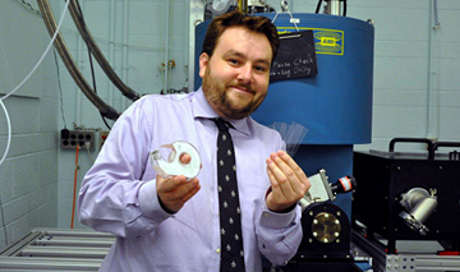
Simple solution could help pave way for quantum computers and other next gen devices.
Leave it to Canada to come up with a “Red Green” fix for a high physics problem like super conductivity. An international team, led by University of Toronto physicists, has developed a technique using Scotch tape to induce high-temperature superconductivity in a semiconductor.
High-temperature superconductors — materials that conduct electricity without heat generating resistance –- could be the basis for next gen devices like quantum computers, say researchers. Problem is, only certain compounds of iron, copper and oxygen, called cuprates, posess high-temperature superconducting properties, but were thought to be impossible to incorporate with semi-conductors.
For example, inducing the proximity effect –- in which superconductivity in one material is transferred to otherwise normally semi-conductor –- has been difficult because the fundamental quantum mechanics require the materials to be in nearly perfect contact. The solution, says University of Toronto physicist, Ken Burch, was as close at hand as the utility drawer, namely, two-sided Scotch-brand poster tape.
“Who would have thought simply sticking things together can generate entirely new effects?” said Burch, who is team leader for the research project.
The team used Scotch poster tape and glass slides to place high-temperature superconductors in proximity with a special type of semi-conductor known as a topological insulator, which behaves a like semi-conductor in bulk, but are metallic at the surface.
Other than its simplicity, the importance of the team’s achievement is that superconductivity was induced in the semiconductor using higher temperature liquid nitrogen rather than the previously required and more expensive, liquid helium. This, in turn, may lead to potentially much more powerful optical computers that use light, rather than electricity.
In addition to Burch, the U of T team included Alex Hayat, Parisa Zareapour, Shu Yang F. Zhao, Michael Kreshchuk, Achint Jain. All are members of the Department of Physics and Institute for Optical Sciences.